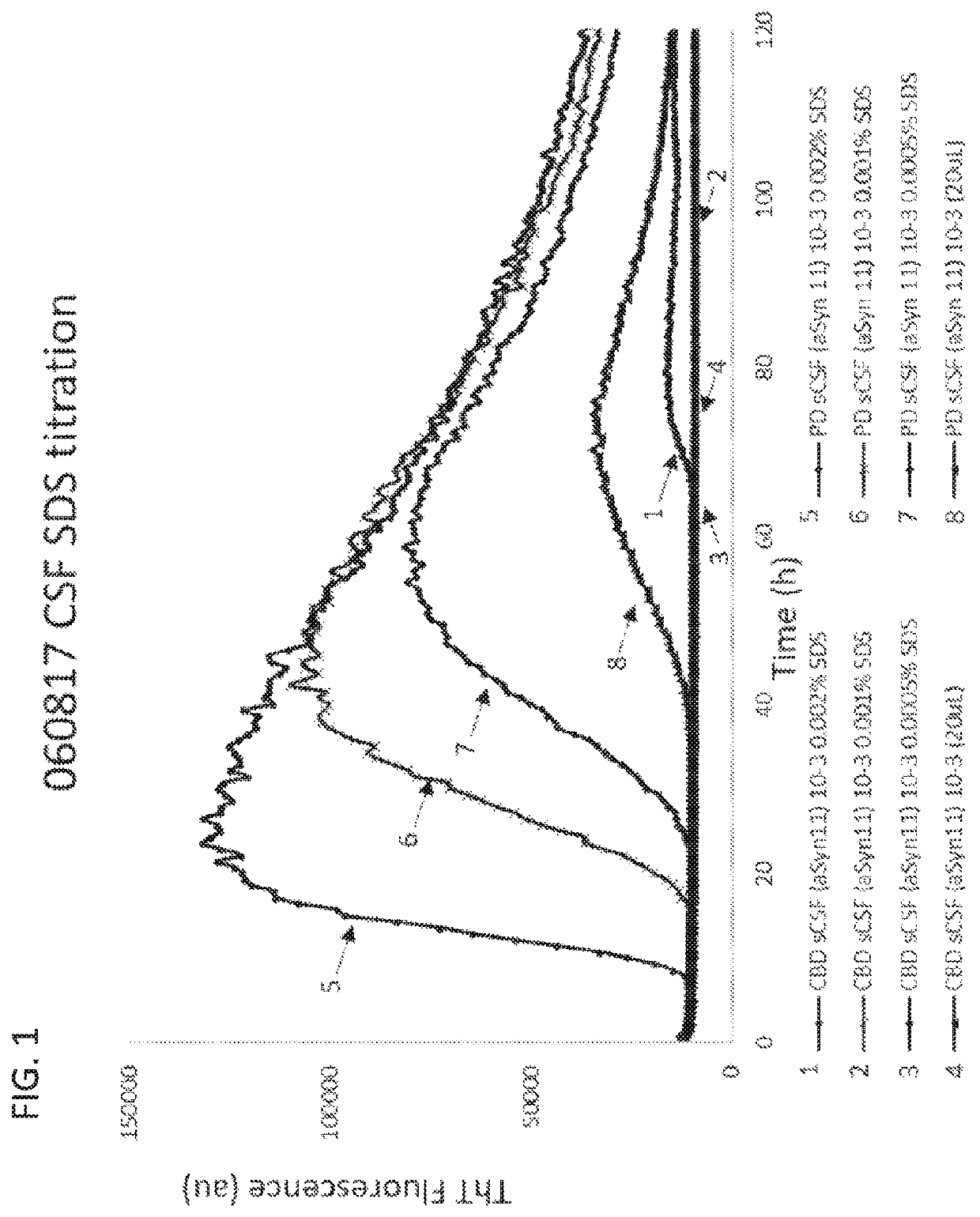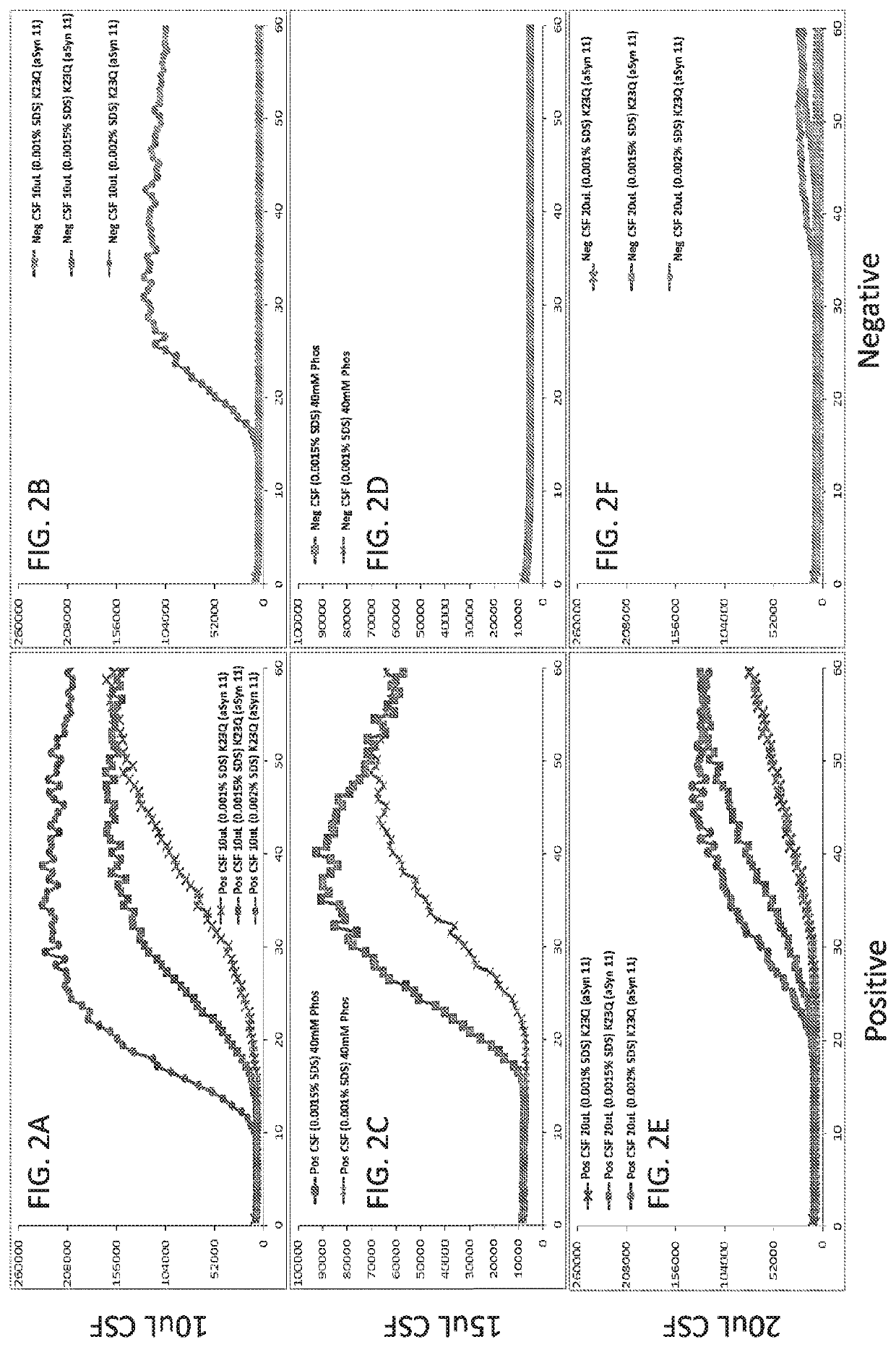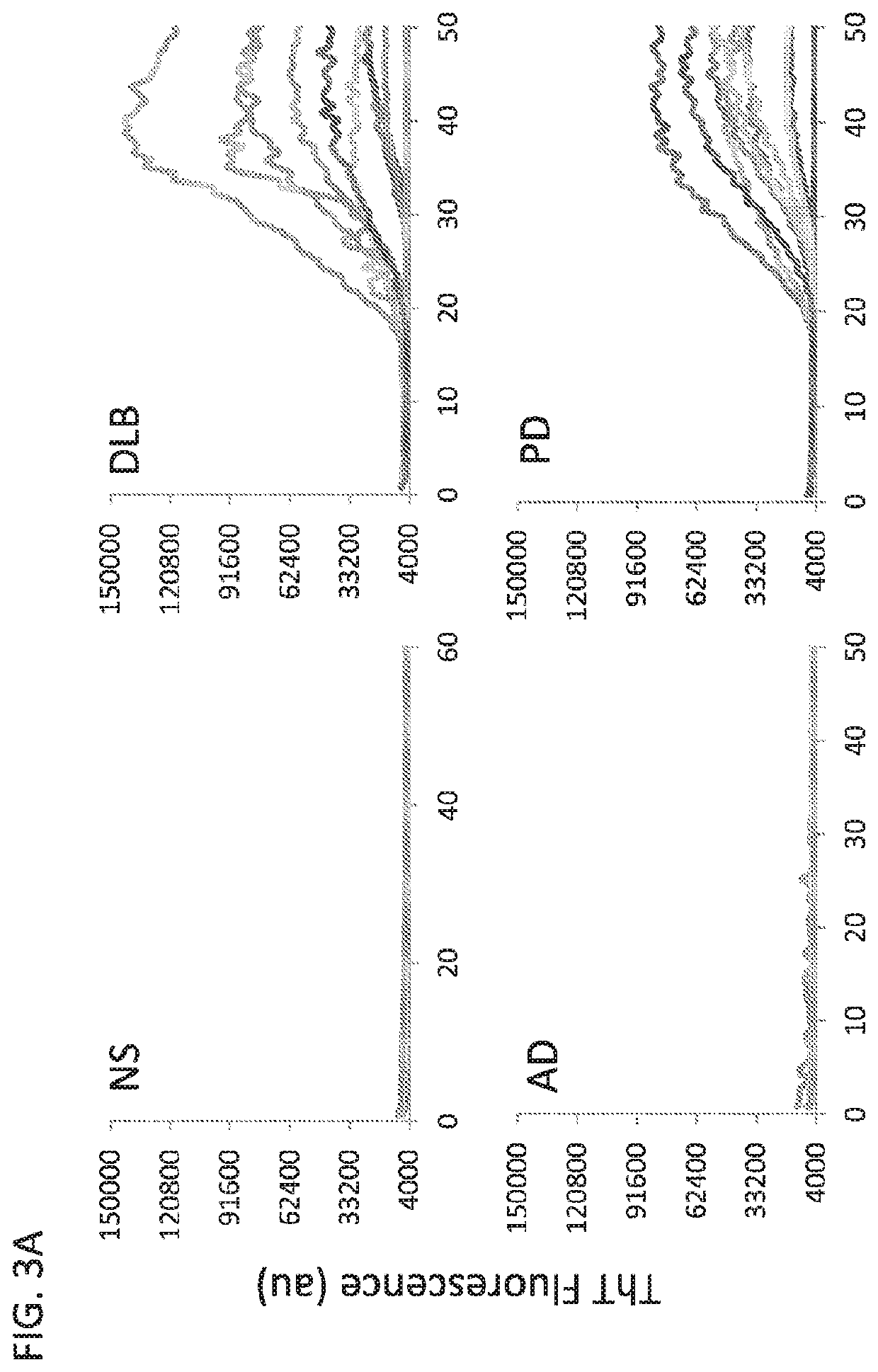Assay for the detection of alpha-synuclein seeding activity associated with synucleinopathies
a technology of alpha-synuclein and synucleinopathies, applied in the field of synucleinopathies, can solve the problems of slow methods, and achieve the effects of rapid detection of syn rt-quic, excellent sensitivity and specificity, and rapid detection
- Summary
- Abstract
- Description
- Claims
- Application Information
AI Technical Summary
Benefits of technology
Problems solved by technology
Method used
Image
Examples
example 1
Materials and Methods
[0196]Alpha-synuclein osmotic shock protein purification protocol: Five ml of media were inoculated from a glycerol stock of E. coli bacteria containing the vector for K23Q αSyn protein expression. Following a 4-5-hour incubation with continuous 225 rpm agitation at 3TC, 1L of the auto-induction media was prepared and the 5 mL starter culture was added. The cells were grown in a shaking incubator at 37° C., 225 rpm, overnight. The next day cells were harvested by splitting the 1 L culture into 4 250 ml conical tubes and centrifuging at 3273×g, 4° C., 10 min.
[0197]Next, the cell pellets were resuspended in 10% volume of room temperature osmotic shock buffer, (25 mL per 250 mL of cell culture before centrifugation) and incubated at room temperature for 10 min. This was resuspended gently with a 25 mL serological pipette. Next the suspension was centrifuged at 9000×g, 20° C., 20 min. The supernatant was discarded and the pellet was resuspended gently in ice-cold wa...
example 2
Sodium Dodecyl Sulfate (SDS) Titration in CSF Seeded αSyn RT-QuIC
[0206]The results presented in FIG. 1 shows a much faster and stronger fluorescence signal when SDS is added to the reaction mix. As the concentration of SDS decreases, so does the speed of detection. Of note is the spontaneous conversion of the substrate we observed when using 0.002% SDS (gray circles at ˜69 hours) in the CBD seeded CSF reactions. This suggest that a concentration of SDS lower than 0.002% should be used.
example 3
Sodium Dodecyl Sulfate (SDS) and CSF Titration in αSyn RT-QuIC
[0207]The results presented in FIG. 2 show that when using 10 μL of CSF per reaction in combination with 0.002% SDS some spontaneous conversion of the substrate in non-synucleinopathy (corticobasal degeneration) CSF-seeded reactions occurred. This was not observed when the same volume of CSF was used in combination with 0.0015% SDS (FIG. 2B). In FIG. 2C, where reactions were seeded with 15 μl of CSF, rapid detection of αSyn seeding activity was observed in Parkinson CSF-seeded reactions and no spontaneous conversion of the substrate (FIG. 2D) was observed in negative CSF seeded reactions. In FIG. 2E, where reactions were seeded with 20 μl of CSF, samples showed weaker and slower fluorescence signals (average of all replicate wells) with spontaneous conversion of the substrate in CBD CSF seeded reaction with 0.002 and 0.0015% SDS in the reaction mix. These results suggest that there was only modest gain of speed of detecti...
PUM
| Property | Measurement | Unit |
|---|---|---|
| temperature | aaaaa | aaaaa |
| diameter | aaaaa | aaaaa |
| diameter | aaaaa | aaaaa |
Abstract
Description
Claims
Application Information
 Login to View More
Login to View More - R&D
- Intellectual Property
- Life Sciences
- Materials
- Tech Scout
- Unparalleled Data Quality
- Higher Quality Content
- 60% Fewer Hallucinations
Browse by: Latest US Patents, China's latest patents, Technical Efficacy Thesaurus, Application Domain, Technology Topic, Popular Technical Reports.
© 2025 PatSnap. All rights reserved.Legal|Privacy policy|Modern Slavery Act Transparency Statement|Sitemap|About US| Contact US: help@patsnap.com



